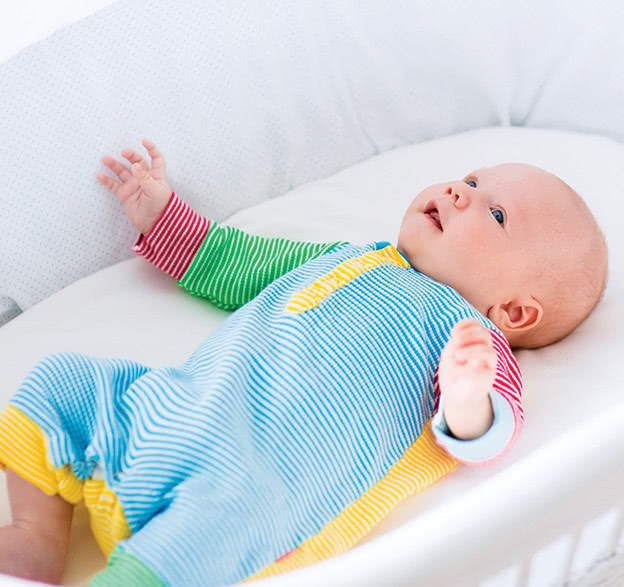
Section
Baby Sleep Safety
Giving your baby a safe place to sleep is important. Safe sleep helps lower the risk of injury, breathing problems, and SIDS (sudden infant death syndrome).
Where to Find Help
Things You Can Do
More Sleep Safety Tips
Your baby should not sleep in your bed. Put him in a crib or bassinet in your bedroom, so he is near you.
Use a sleep sack or fitted onesie to keep your baby warm while sleeping.
Don’t allow anyone to smoke or vape around your baby or in your home. It increases the risk of SIDS.
Pacifier Safety
A pacifier at nap or bedtime may help prevent SIDS.
Try not to use a pacifier until breastfeeding has become a habit. This is usually at 2 to 3 weeks old.
Buy a one-piece, dishwasher-safe pacifier. The hard plastic shield should be at least 1½ inches across.
Never tie a pacifier to your baby’s body, clothes, or crib. He can get tangled in the string.
Replace pacifiers when the rubber nipple gets torn or discolored.
Use the pacifier size recommended for your child’s age.
Sleep Safety ABC’s
Do not put your baby in your bed. He could roll out, or you could roll on top of him. The American Academy of Pediatrics recommends that babies sleep
Alone, in a crib or bassinet, in your room.
On their Backs.
In safe Cribs.
Make Sure Your Baby’s Crib Is Safe
Use a new crib that meets current safety standards. If you are using an old crib, make sure it was made after 2011. That is when crib safety standards were strengthened.
Do not use a crib with a drop rail or decorative cutouts on the headboard or footboard.
A crib’s bars are too far apart if a soda can fits between them. Your baby could get his head, hand, or foot stuck in the space.
Use a firm, tight-fitting mattress with a fitted crib sheet. There should be no space between the mattress and the crib sides.
Do not put loose blankets, comforters, pillows, bumper pads, or stuffed animals in the crib.
Keep cords from curtains, blinds, bedding, and toys away from the crib. Your baby could get caught in a cord and strangle.
When You Travel
When you are away from home, use a portable crib or bassinet. Chairs and sofas are too soft for sleeping. Your baby could roll off or suffocate in the cushions.

Babies should sleep on their backs, in a crib with only a tight-fitting sheet. Keep your baby warm with clothing, like a onesie.
Put Your Baby to Sleep on His Back
For the first 12 months, always put your baby to sleep on his back, not on his side or stomach. When babies sleep on their backs, they are less likely to die of SIDS (sudden infant death syndrome). SIDS can happen when a baby cannot breathe easily. If your baby falls asleep in a baby carrier, car seat, or sling, move him to a crib with a firm mattress as soon as possible.